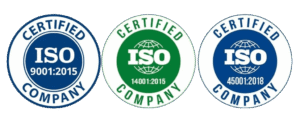Adhesive tapes are a staple in homes, offices, and industries, but few understand the science behind how they stick. From standard packing tape to specialized industrial adhesives, understanding the science of adhesive tapes helps businesses choose the right product for their needs.
1. What Is Adhesive Tape?
Adhesive tape consists of two main components:
- Backing Material: Provides strength, flexibility, and structure. Common backings include plastic films, paper, cloth, or foil.
- Adhesive Layer: The sticky component that bonds to surfaces. Adhesives can be pressure-sensitive, heat-activated, or water-activated.
Together, these components determine a tape’s performance, durability, and best applications.
2. How Adhesive Tapes Work
Adhesive tapes rely on two key properties: tack and adhesion.
- Tack: The initial stickiness when the tape touches a surface.
- Adhesion: The long-term strength holding the tape in place.
Pressure-sensitive adhesives (PSAs), commonly used in packing tape, bond under pressure without heat or water. These adhesives are designed to stick quickly and resist peeling during shipping or handling.
3. Types of Adhesive Tapes
a) Packing Tape
- Strong, pressure-sensitive adhesive.
- Ideal for sealing boxes and parcels.
b) Masking Tape
- Low-adhesion tape for painting or surface protection.
- Easy to remove without residue.
c) Duct Tape
- Cloth-reinforced, heavy-duty tape.
- Versatile for repairs, sealing, and bundling.
d) Double-Sided Tape
- Adhesive on both sides for bonding surfaces together.
- Used in crafts, construction, and industrial applications.
e) Specialty Tapes
- Tamper-evident, heat-resistant, or anti-slip tapes for specific industry needs.
4. Factors Affecting Tape Performance
- Surface Type: Smooth surfaces generally provide better adhesion than rough or dusty ones.
- Temperature: Extreme heat or cold can reduce tape effectiveness.
- Tape Age: Adhesives can degrade over time, losing stickiness.
- Pressure: Adequate pressure during application ensures optimal bonding.
5. Why Businesses Rely on Adhesive Tapes
- Packaging and Shipping: Ensures boxes remain sealed and products protected.
- Branding: Custom printed tape enhances brand visibility.
- Industrial Applications: Provides secure bonding for heavy-duty or specialized operations.
- Efficiency: Fast and reliable solution for assembly, repairs, and bundling.
6. Tips for Choosing the Right Tape
- Match tape type to product weight and surface.
- Consider environmental conditions like heat, moisture, or exposure.
- Use industrial suppliers like Carewell Group for high-quality tapes suitable for business and shipping needs.
Conclusion
The science of adhesive tapes combines materials engineering and chemistry to create versatile, reliable bonding solutions. By understanding how adhesives work and selecting the right tape for specific tasks, businesses can improve packaging efficiency, product protection, and overall operational performance.
Primary CTA: Explore High-Quality Packaging Tapes
Location: Carewell Group Pty Ltd, Unit 27/191, McCredie Road, Smithfield, NSW 2164
Phone: +61 0477 123 699
Email: sales@carewellgroup.com.au
Smart Tip: Testing different adhesive tapes on your products ensures maximum protection while reducing waste and customer complaints.









